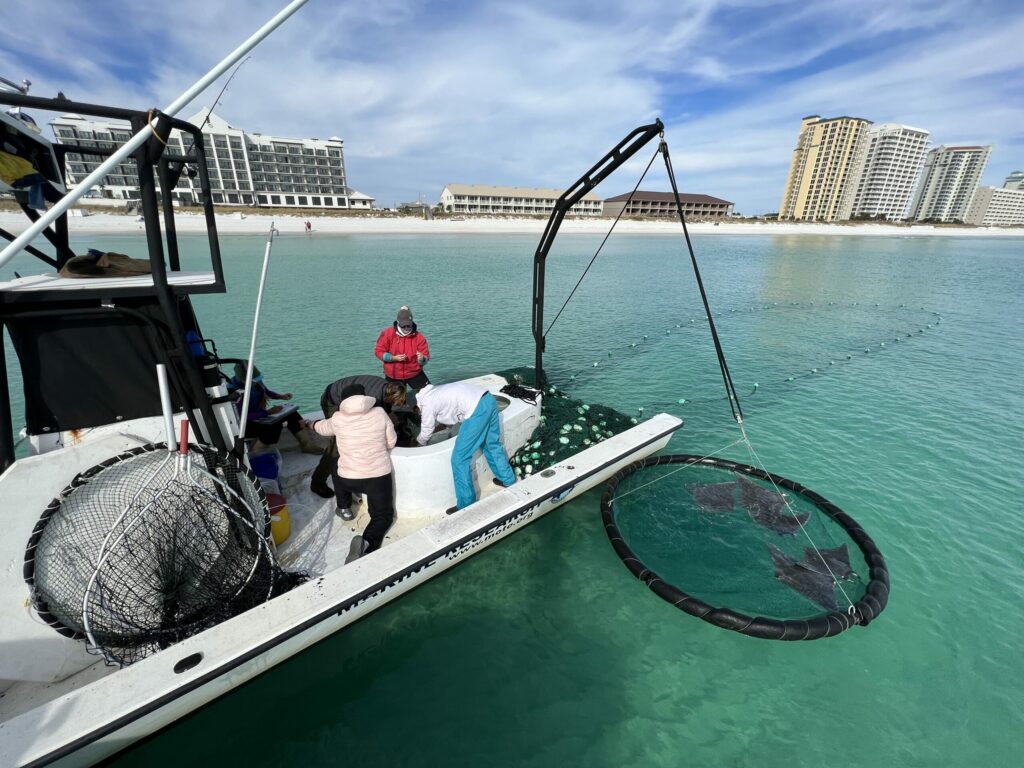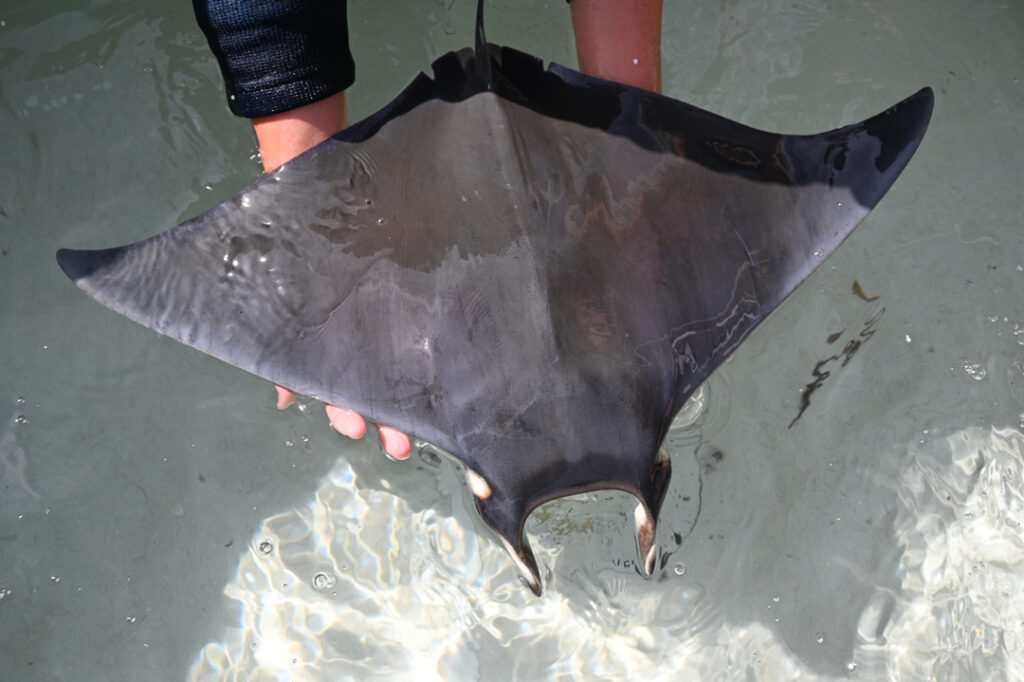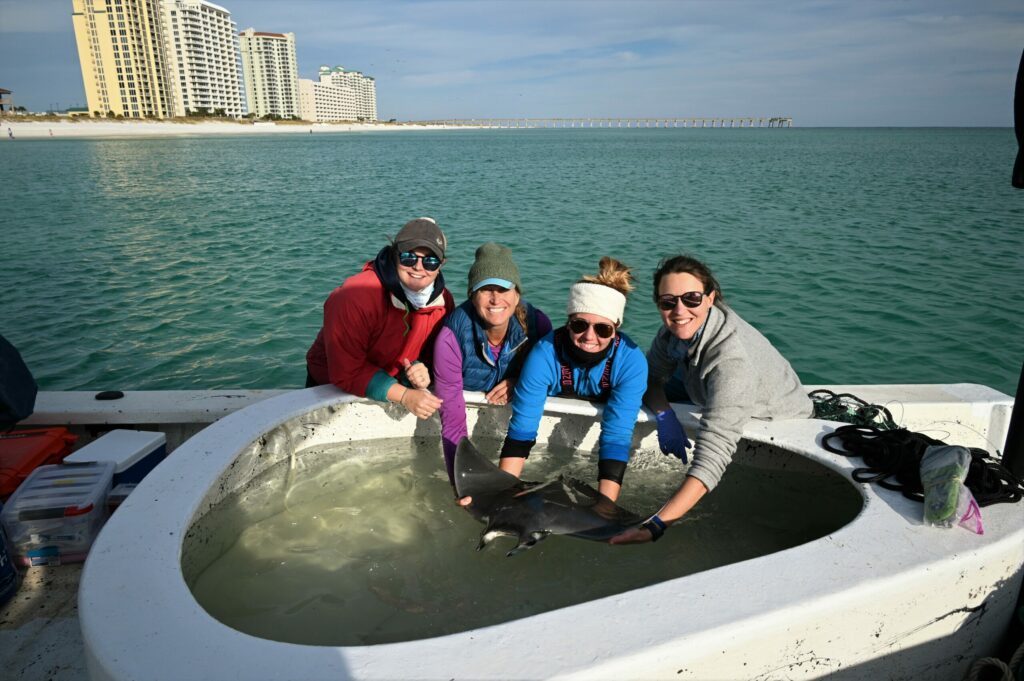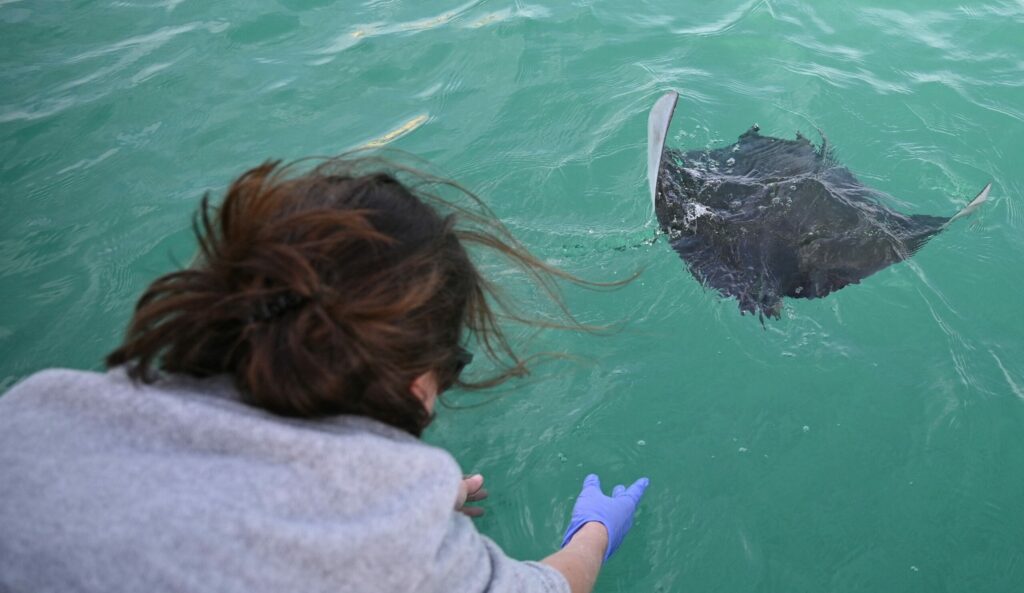Clear water and surfing devil rays!
A successful first tagging effort in the Florida Panhandle
When Kim and I arrived in Destin in November for our first tagging fieldwork in the Florida Panhandle, everything seemed to be against us: no recent devil ray sightings in the area, poor weather the week before… But we did not give up, and our search efforts with the Okaloosa County Coastal Resources team were rewarded: the very same day we had to make a final decision about the fieldwork, we walked on Navarre fishing pier and saw four devil rays doing their classic surfing/feeding routine in the waves. They were around, we just had to find them!
While our captain was driving the research boat to Destin, we spent the following day preparing our field gear: datasheets, PIT tags (electronic microchips) and reader, acoustic tags, vials for genetic samples, blood and muscle biopsy sampling kits, measurement tapes and rulers, hanging scale, and fully charged GPS and cameras. Given the near-freezing temperatures expected early morning on the boat (yes, even in Florida!), we also ran a quick errand to buy the warmest socks and hats we could find. One last crew briefing, and we were ready!

This photo perfectly captures the essence of this first tagging effort in the Panhandle: cold air, crystal clear water and devil rays! Photo by Jessica Valek | © Mote Marine Laboratory
Now, how do we search and capture pygmy devil rays?
- We drive the boat along the beach and the sand bars, and watch for small moving shadows from the boat tower;
- Once a group of rays is spotted, everyone gets ready – captain Dean manoeuvres the boat to circle the rays as we deploy the seine net;
- While we make sure the net stays in place, co-captain Pete snorkels inside the net to scoop up the rays one by one using a large dip net and bring them back to the boat. Onboard, there is a tank filled with oxygenated seawater that can fit a few juvenile devil rays;
- The scientific work-up can start: an intricate ballet of researchers moving gear around to collect measurements and samples, taking photographs and keeping detailed records, all of this while maneuvering in the equivalent of a small kitchen.

Mh118, a juvenile male of 65 cm disc width and 2.7 kg. Although he was too small to be acoustically tagged, fin clips (notches visible at the rear) were collected for population genetic analyses. Photo by Kim Bassos-Hull | © Mote Marine Laboratory
Three days of fieldwork resulted in 17 devil rays tagged, measured, weighed, sampled and released back to the Gulf. As their disc width ranged 63.0 – 93.4 cm and the species is thought to mature around 100 cm, all were assumed to be juveniles. Only the seven largest and most robust individuals were internally tagged with acoustic transmitters emitting a unique ping for two years. As the rays swim through arrays of underwater receivers deployed along the coast by researchers, their signals are recorded and can be used to study their movements and habitat use.

Tagging marine animals always requires great team effort. From left to right: Kirsty Ballard (Manta Trust), Kim Bassos-Hull (Mote Marine Laboratory), Jessica Valek (Okaloosa County Coastal Resources), Atlantine Boggio-Pasqua (Aix-Marseille University). Photo by Tabitha Siegfried (Gulfarium C.A.R.E. Center) | © Mote Marine Laboratory

Off you go! Tagged devil ray actively swims away upon release in the Gulf of Mexico. Photo by Kim Bassos-Hull | © Mote Marine Laboratory
This successful pilot fieldwork supported by the Mote Scientific Foundation was the first milestone in our research project on this species, and the same tagging effort will be conducted in November 2023 and 2024 thanks to the support of Save Our Seas Foundation. Stay tuned to find out where our acoustically tagged devil rays travelled!
